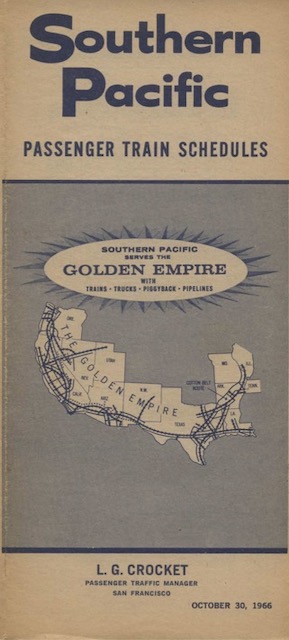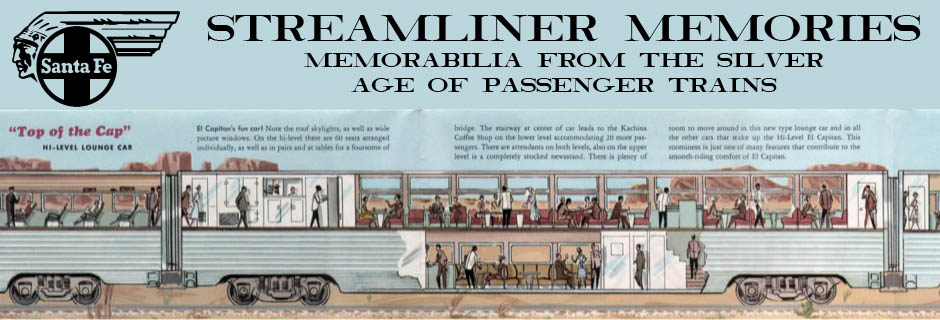I previously mentioned that reducing SP’s system timetable from 16 to 6 pages meant sacrificing a page showing connections at Chicago and St. Louis. In 1963, that page listed two dozen trains on eight different railroads going from Chicago to such places as Boston, Detroit, New York, and Washington, as well as six trains on three railroads going from St. Louis to New York and Washington.
 Click image to download a 2.3-MB PDF of this 6-panel timetable.
Click image to download a 2.3-MB PDF of this 6-panel timetable.
The six-page timetables do include some connections, including trains connecting with the Sunset Limited at New Orleans, with the Golden State at Kansas City, and the Shasta Daylight/Cascade at Portland. But connections at Chicago are completely missing even though two SP trains — the City of San Francisco and Golden State — both terminated in Chicago. This seems strange considering that Chicago was the most important city in the nation for railroad connections and could be blamed on SP’s “anti-passenger train” mentality but more likely was because there wasn’t room for all 30 trains and SP didn’t want to slight any of the connecting railroads.

If you look at the April 1966 timetable, the Shasta Daylight is missing entirely, but the fall 1966 timetable states it runs “Summer Only.” This turns out not to have been the case, because SP chose not to bring the Shasta back in 1967, without apparently seeking regulatory permission to do so. But by this time SP and the ICC were embroiled in so many other train off proceedings (Sunset, Lark, Golden State) the ICC probably just said “aw, screw it we can’t fight every single one of these.”
The 1966 airline strike gave the railroads one more chance to prove they could fit into the picture. The COSF ran 20+ cars for 6 weeks during the strike, but within a couple of months of the strike ending traffic levels returned to pre-strike levels, and continued to drop.